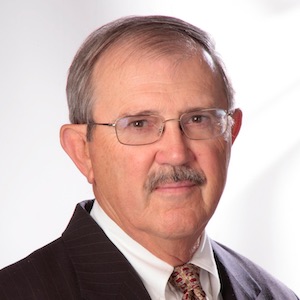EDITOR’S NOTE: This article is an excerpt from Rules of Patent Drafting: Guidance from Federal Circuit Cases, 2014 Edition, which is now available at Amazon.com. This is the sixth installment of this series. To read other installments please see Joseph Root on Patent Claim Drafting.
—————————–
 Broad patent coverage results from broad claims, supported by a broad specification. Neither of these factors springs from the invocation of any magic formula. Rather, breadth results from hard, careful work. This section sets out a group of signposts that a drafter can employ to gauge whether she is writing, or has written, a broad patent document.
Broad patent coverage results from broad claims, supported by a broad specification. Neither of these factors springs from the invocation of any magic formula. Rather, breadth results from hard, careful work. This section sets out a group of signposts that a drafter can employ to gauge whether she is writing, or has written, a broad patent document.
“Broad” in this context means “broadest supportable” coverage, limited only by the technology in terms of supportability and by the prior art in terms of outer reach. A failure to achieve such breadth is generally attributable to overclaiming, where one runs afoul of the prior art; underclaiming, where the drafter stop short of claiming all he could; or faulty claiming, where the drafter attempts to achieve breadth, but support issues or drafting errors restrict claim scope. Sound principles, instilled by effective training, cannot substitute for adequate knowledge of the prior art. They can provide the knowledge and thus the confidence to claim out to the limits defined by that art.
An excellent example of breadth at work can be seen in Amgen’s patents addressing recombinant erythropoietin (EPO), useful in producing anti-anemia drugs and exemplified by the litigation reported as Amgen, Inc. v. Hoechst Marion Roussell, Inc. Amgen had developed a process for producing a non-naturally occurring EPO product that Included the step of growing cells comprising a promoter DNA. Various claims recited those cells as being vertebrate or mammalian. Nothing within the specification could be construed as a disavowal of scope, and the district court, as supported by the Federal Circuit, construed those claim terms according to their ordinary meaning, with vertebrates including mammals and mammals including humans. Thus, the use of human cells fell squarely within the claim scope.
Amgen’s success can be attributed first to an overall broad scope. The drafter here clearly set out to cover the widest possible range and did so, both in the specification and in the claims. Then, the claim terms and claim structure equally supported a broad construction. Claims address both vertebrate and mammalian cells, clearly including human cells, and separate claims addressed nonhuman cells. Moreover, both composition of matter and process claims were included. Third, the drafter avoided creating any restrictions, either in the specification or prosecution history. And finally, with particular importance in fast-moving technologies, nothing in the claims or specification limited the claim scope to technology existing at the time the application was prepared and filed. As set out below, these steps cannot guarantee unexpected prior art from wreaking havoc, but they can ensure that the document will be effective out to the limits set by the prior art.
[Varsity-5]
Think broadly
Broad patents result from broad thinking. Indeed, a large number of “patent scope” failures can be attributed to thinking errors, not drafting errors. Consider, for example, the celebrated case of Liebel-Flarsheim Co. v. Medrad, Inc., where the same patent was reviewed by the Federal Circuit twice, with considerably different results. Briefly, the patent concerns a veterinary injector syringe, designed and originally claimed as including a pressure jacket. During prosecution the plaintiff learned that a primary competitor had introduced a competitive injector without a pressure jacket, and it then removed all reference to the pressure jacket from the claims; and upon issue of that application, it immediately filed suit against the competitor. The first trip to Washington concerned claim construction, and the plaintiff secured a construction that extended to an injector without a pressure jacket. On remand, however, the district court held the patent invalid for failure to enable claims without a pressure jacket. The Federal Circuit affirmed.
Although Liebel is usually cited in the course of commenting on the Federal Circuit’s move toward “full scope” enablement analysis, drafters might profitably consider the patent strategy process within the patentee’s organization. First, no doubt exists that the specification in question completely lacks even a shred of support for an injector lacking a pressure jacket. Not only is express support lacking, in terms of examples, embodiments, and the like, but no broadening language exists to point in the direction of a jacketless device. More important, the specification actively disparages the notion of an injector without a pressure jacket. Based on the disparagement language alone, one can argue that the ensuing litigation offered at best a slim chance of success.
Now consider the decisions underlying the actual drafting process at all stages of this story. Initially, the drafter decided to forego coverage of a jacketless injector. We do not know whether anyone asked the question, “What if a competitor develops a jacketless injector?” Liebel-Flarsheim’s technical personnel might well have considered that possibility remote at best, having attempted unsuccessfully to develop such a device, or perhaps budgetary constraints prevented the development of additional embodiments.
None of those possibilities explains the lack of broadening language in the Liebel-Flarsheim patent specification, however, or the decision to disparage the possibility of a jacketless injector. The work of literally a few minutes would have made the “full scope” analysis at least a much closer call. Broad thinking might not have secured a completely different result, but it certainly would have given the litigators much more ammunition for the fight.
After thinking broadly, drafters need to write broadly. Restaurant Technologies, Inc. (RTI) developed a system for supplying and disposing of cooking oil used with restaurant fryers. RTI secured a patent on that system, and the claim involving the distribution and recycling of cooking oil included a limitation reciting a “piping network interconnecting” the various units. The notion of an interconnected network of pipes was reinforced in the specification, which noted, “[t]he stations are interconnected by piping . . . capable of carrying the required flow of cooking oil between selected stations for the various purposes as described below.” The drawing supported the complete interconnectedness of the system. Unfortunately, the accused infringer’s oil distribution system was not completely interconnected. Rather than having everything connected to everything else, the accused device had a single separate connection running from the oil source to the fryer, and another separate connection running from the fryer to the waste station. Summary judgment of non-infringement was affirmed.
How could the drafter have worded that claim to secure broader coverage? There are a number of possibilities, starting with simply replacing “interconnecting” with “connecting.” Or one could employ more patent-specific terms such as “in fluid communication with” and so on. What appears clear is that a term-by-term inquiry, asking whether the chosen claim terms imposed any unnecessary limitation, was not done. Note also that the interconnecting feature clearly constituted a very minor aspect of the invention. This invention aimed at supplying and disposing of cooking oil quickly and conveniently; the details of interconnectedness most likely never entered neither the drafter’s nor the inventor’s mind as either a positive or negative feature of the invention.
Simply choosing the broadest possible word, however, poses its own problems, as overclaiming dooms a patent to an untimely end. That fate befell a patent dealing with a multiplexer chip, in a reexamination proceeding styled In re Translogic Tech. The language at issue concerned input terminals, recited as “coupled to receive” input variables. The reexamination was conducted in parallel with an infringement litigation in the district of Oregon; in the litigation, the district court construed the claim term by looking to the specification and deriving the meaning, “connected to receive an input variable, directly or through one or more intervening inverters or buffers.”
The Federal Circuit looked first to the plain meaning of the term “coupled to receive” and found no ambiguity. Thus, there was no need for recourse to the specification. The ordinary meaning, “capable of receiving,” applied. Broad, however, is not always good. The somewhat restrictive construction applied by the district court sufficed to distinguish the closest prior art; the re-examination proceeding utilized the PTO’s “broadest reasonable interpretation rule,” which did not. The drafter could at least take heart that being in the midst of a reexamination proceeding allowed him to amend the claims and try again.
In discussing the claim body, definitions are recommended as a means for establishing a desired claim construction. That advice holds, but a drafter must exercise care to ensure that the definition does not turn out to be restrictive. Whatever the definition says will control. For example, a patent dealing with multitasking software contained a definition of the term “multithreading” as “preemptive time-sliced execution of a plurality of threads.” Preemptive, time-sliced execution necessarily requires that a thread be interruptible, yet the express definition precludes interruption. Faced with a definition that contradicted the plain meaning of the term, the court was forced to derive its own definition from the detailed description, taking the express definition into consideration. In the end, the court concluded that the disclosure did not really correspond to multithreading.
Selecting claim terms for optimal breadth, then, is a two-step process. First, the drafter must understand the range of supported scope, defined on one end by the prior art and the other by the technology. Then, the inventor must ask whether a chosen term occupies an optimal position in that range. Identifying the range limits is very much a matter of educated prediction, subject to revision as more art is identified and the technology better understood. Thus, judgment errors about what constitutes an optimal point should be expected, to a reasonable level, and understood. Failure to think about the problem at all is another matter entirely.

![[IPWatchdog Logo]](https://ipwatchdog.com/wp-content/themes/IPWatchdog%20-%202023/assets/images/temp/logo-small@2x.png)


![[Advertisement]](https://ipwatchdog.com/wp-content/uploads/2024/04/Patent-Litigation-Masters-2024-sidebar-early-bird-ends-Apr-21-last-chance-700x500-1.jpg)

![[Advertisement]](https://ipwatchdog.com/wp-content/uploads/2021/12/WEBINAR-336-x-280-px.png)
![[Advertisement]](https://ipwatchdog.com/wp-content/uploads/2021/12/2021-Patent-Practice-on-Demand-recorded-Feb-2021-336-x-280.jpg)
![[Advertisement]](https://ipwatchdog.com/wp-content/uploads/2021/12/Ad-4-The-Invent-Patent-System™.png)







Join the Discussion
One comment so far.
Alan Minsk
September 27, 2014 11:34 pmThe goals of claim drafting as discussed in the article are desirable, but in practice they are very difficult to achieve. This is because different inventions and different technologies are best described and claimed using different approaches or concepts. For those interested, I have developed a time-tested methodology for providing a description and basis for broad claiming of concepts and embodiments, as described in my article:
http://www.lanepowell.com/17947/a-key-obstacle-to-implementing-a-patent-strategy-and-one-way-to-overcome-it/